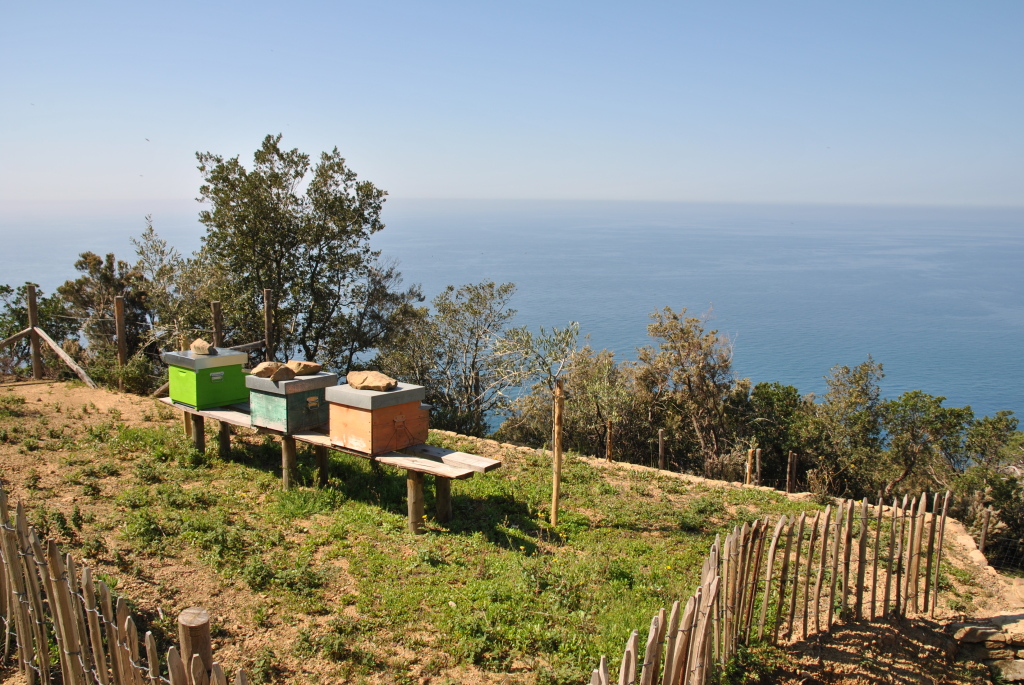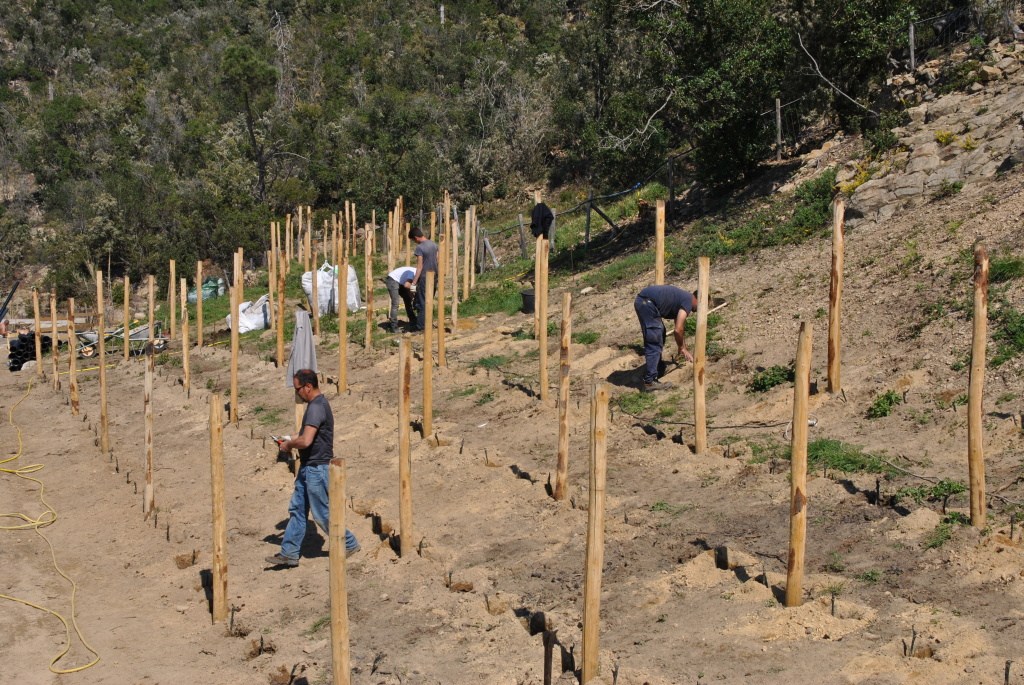Punta Mesco separates the inlet of Levanto from that of Monterosso and is one of the most characteristic and fascinating landscapes of Liguria.
In this area there is “Case Lovara”, received by FAI – Fondo Ambiente Italiano as a donation in 2009 and identified as a pilot site for the recovery of a rural agricultural settlement within a Site of Community Interest; the intervention area also falls within the Cinque Terre National Park. Thanks to two important agreements with the Laboratory for Landscape and Cultural Heritage (CultLab) of the University of Florence, and with the Department of Sciences for Architecture DSA of the University of Genoa, the FAI has best restored the historical rural landscape , taking up traditional cultivation techniques, rearranging the artifacts with particular attention to the terraces.
The property object of the intervention extends for about 45 hectares, and includes three rural buildings, some dry stone terraces, once cultivated with vines and olive trees and subsequently abandoned and invaded by vegetation. The rest of the area is affected by Mediterranean scrub and by the presence of maritime pines, often affected by pathogens.
In this context, the CultLab of the University of Florence and the Spinoff Horizons srl have taken care of and designed the recovery of the terraced crops, in particular the vineyard, the olive grove, the vegetable gardens and the orchard, as well as the recovery of the dry stone terraces. . The project involved the use of local varieties. The project started with a multitemporal analysis of the entire Punta Mesco area, to highlight the identity characteristics and the transformations that the rural landscape has undergone, as well as with an analysis of the state of conservation of the terraces and the hydrogeological characteristics of the property.

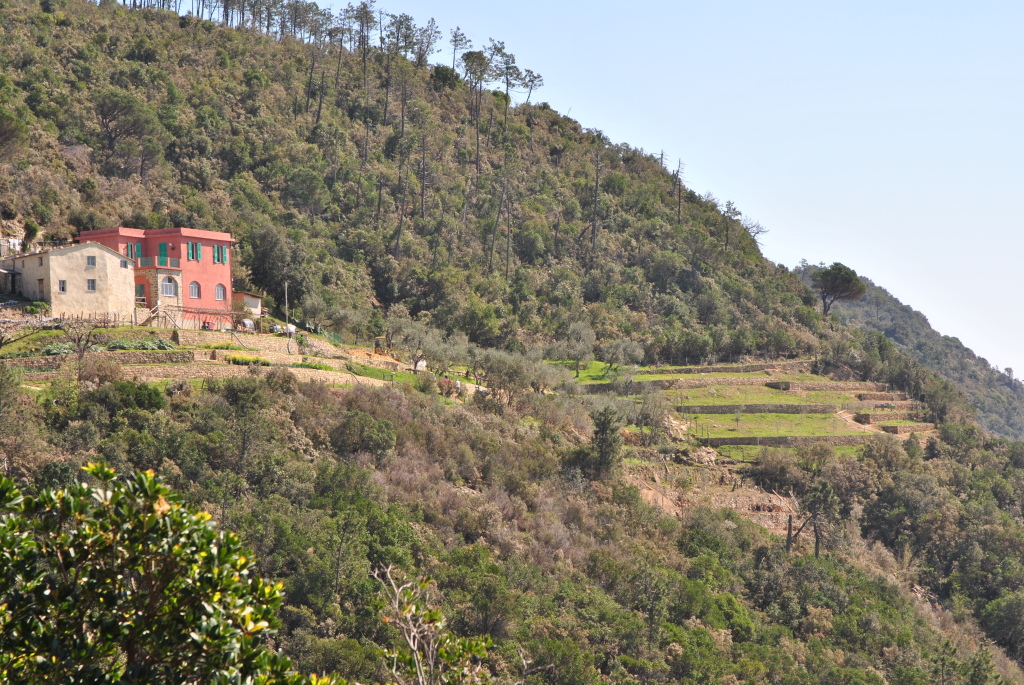
The restored buildings and terraces with the new olive grove on the right and the vegetable gardens under the houses.
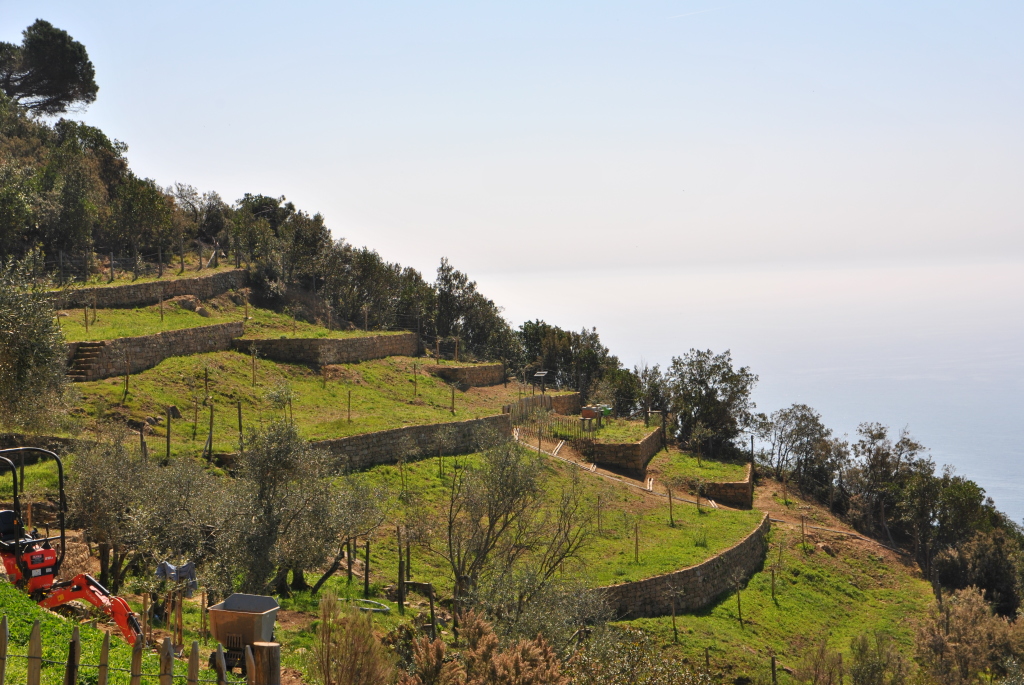
The terracing after the restoration and after the planting of the olive trees.
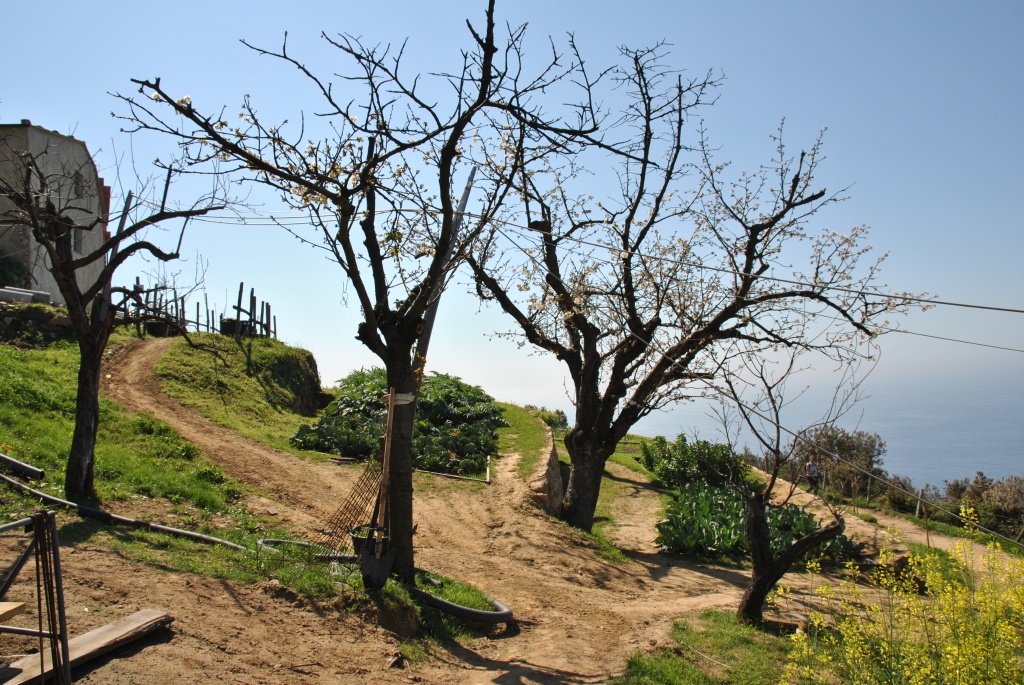
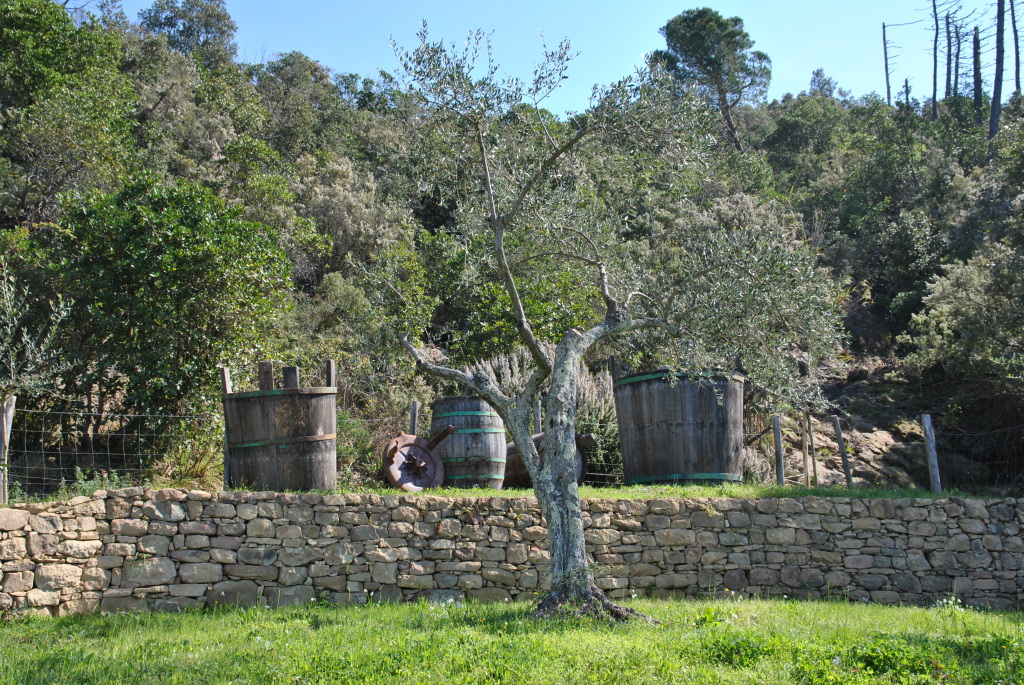
The old plants on the property have been preserved, pruned and put back into production. On the left the cherry trees in front of the new gardens, on the right an old pruned olive tree in front of a restored dry stone wall.
On the property, beehives have also been positioned for the production of honey (left), and the construction of a chicken coop with specimens of the local Val di Vara breed is also planned. On the right, the planting of the vineyard on the restored terraces.

